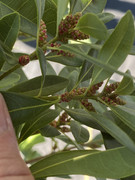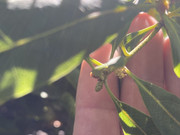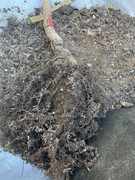51
Tropical Fruit Discussion / Re: Yangmei (Morella/Myrica rubra) thread
« on: January 17, 2024, 10:29:44 PM »
I would let one branch of the rootstock grow out in the hopes it is a male.There is a good chance your Dongkui will eventually fruit without a male but that can be many years down the road so you can potentially lose many years of fruit production without a male.
When you let the rootstock grow, be very careful that it doesnít take over the tree. The rootstock sprouts seem to grow vigorously at the expense of the grafted portion of the tree.
Simon
When you let the rootstock grow, be very careful that it doesnít take over the tree. The rootstock sprouts seem to grow vigorously at the expense of the grafted portion of the tree.
Simon

















